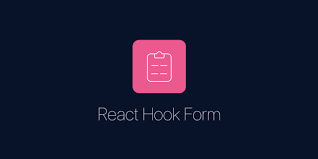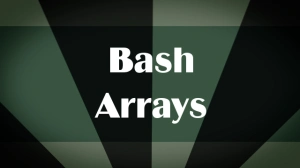Like C++, Java, Smalltalk, and many others, Python is an object-oriented language. Python, however, is multi-paradigmatic, meaning that you can choose the paradigm best suited for the task, but its central paradigm is object-oriented programming.
The term object refers to a collection of data (attributes) with a set of methods for accessing and modifying that data. We discussed global variables and functions in Part 1, but here we describe abstraction concepts relevant to objects.
Objects and Classes
Objects consist of attributes and methods. Attributes are variables that are part of an object, and methods are somewhat like functions stored in an attribute.
Object-oriented design is useful when thinking of the relationships classes and objects might have with one another and related functionality. It is appropriate in cases where implementing patterns leading to software reuse.
In order to plan out what classes and methods to use, it may be helpful to think of the description of the problem and relate nouns with possible classes, verbs with methods, and adjectives with attributes.
Classes are a set of objects. Similar to the namespace definitions that we covered in Part 1, class namespaces refer to the special namespace that all the code in the class statement will execute.
Inheritance
Inheritance involves creating specialized classes of objects from general ones. One class may be the subclass of one or even multiple classes (multiple inheritance). By using more than one superclass (a class from which subclasses can be created), you can create orthogonal pieces of functionality that are independent and distinct.
Example
To identify a superclass, we write it in the parentheses after the class name.
class Censor:
def init(self):
self.erased = []
def bleep(self, sequence):
return [x for x in sequence if x not in self.erased]
class Bleep(Censor): # Subclass of Censor
def init(self): # Overrides init method from Filter superclass
self.erased = ['CENSORED']
Censor on its own is a general class and does not actually censor anything. However, it becomes useful when we can use it as a base class that bleeps out ‘CENSORED’ words from sequences once the bleep method is inherited and init overwritten.
Abstract base classes, also known as the abc module in Python, is useful in identifying the functionality a class should be able to provide, without actually implementing it.
Example
from abc import ABC, abstractmethod
class Print(ABC):
@abstractmethod
def echo(self):
pass
@abstractmethod is a decorator that marks the method as abstract, and therefore as one that must be implemented in a subclass. We can subclass it and instantiate it by overwriting the echo method:
class Typewriter(Print):
def echo(self):
print("Overwriting the base class!")
After instantiating Typewriter object t, we can access its echo method:
>>> t = Typewriter()
>>> isinstance(t, Typewriter)
True
>>> t.echo()
Overwriting the base class!
However, if we create another class that is not a subclass of Print, we still pass type checking:
class Scribe:
def echo(self):
print("Sample Text")
It passes as a Typewriter object, yet isn’t one:
>>> s = Scribe()
>>> isinstance(s, Print)
False
Sometimes it isn’t possible to subclass, such as when importing Scribe from someone else’s module, for instance. In this case, we can register Scribe as a Typewriter as follows:
>>> Typewriter.register(Scribe)
<class '__main__.Scribe'>
>>> isinstance(s, Typewriter)
True
>>> issubclass(Scribe, Typewriter)
True
One caveat is that while any instances of a subclass of an abstract class we register will return True as an instance, it will not have its attribute echo, and this is in keeping with duck typing (the type or the class of an object is less important than the methods it defines).

Polymorphism
Polymorphism comes from the Greek word for “having many forms.” It is the ability to treat objects of different types and classes similarly. Concretely, this means you can use the same operations on objects of different classes without knowing the specifics of its class implementation.
The benefit is loose coupling, more flexibility, and easier refactoring. However, when we need to find out what methods or attributes an object has, we can use interfaces and certain functions.
Example
The repr() function returns a printable representational string of the given object. It is different than str() because it is used primarily for debugging (calculating precise values and printing strings exactly as represented); whereas str() is for output purposes.
def text_length(x):
print("The length of", repr(x), "is", len(x))
repr() is an example of polymorphism because it works regardless of the input type:
>>> text_length('Test String')
The length of 'Test String' is 11
>>> text_length([90, 32, 12, 09])
The length of [90, 32, 12, 09] is 4
Encapsulation
Encapsulation is hiding unimportant details of how objects work from the outside world. Objects can have their internal states (attributes) hidden. This makes attributes available only through methods. In Python, however, all attributes are publicly available, which means programmers can accidentally make the state inconsistent.
Example
Here we create an object and bind variable c to it. Suppose we write a HiddenObject class to encapsulate a name within the object using an attribute instead of a global variable.
>>> pcbh = HiddenObject()
>>> pcbh.set_name('Princess Consuela Banana')
>>> pcbh.get_name()
'Princess Consuela Banana'
After creating another object, we see that the original object h retains its name because it has its own state which can be changed using class methods.
>>> cb = HiddenObject()
>>> cb.set_name('Quack')
>>> cb.get_name()
'Quack'
>>> pcbh.get_name()
'Princess Consuela Banana'









Comments: